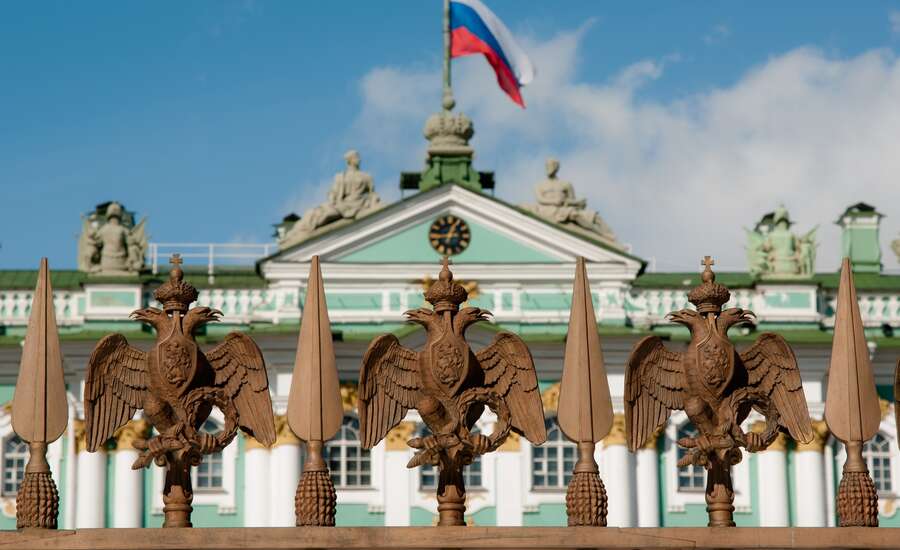Imperial Russia
Photo by Сергей Горбачев from Pixabay
Key facts on Russian history between 1670 and 1917
- During the reign of Peter the Great from 1672 to 1725, Russia became the largest state in the world – three times the size of Europe. Peter was the first Tsar to visit the West, and through his travels, he brought lots of ideas back to Russia. This cumulated in the foundation of St. Petersburg in 1703 as a “Window to Europe.”
- After the death of her husband, Catherine II ascended the crown in 1762. She further enforced suppression of the peasantry as well as expanding the Russian border to the Black Sea and towards the West.
- While waging war in Europe, military officers who came into contact with Western liberalism spread the idea of installing a constitutional monarchy in Russia. This resulted in the Decembrist Revolt of 1825.
- Between the Decembrist Revolt and Nicolas II’s ascension to the throne, the country was divided between those in favor of Westernization and those in favor of a more Eastern looking Slavophile culture. These tendencies ultimately led to more uprisings in November 1830 and January 1863
- Serfdom was finally abolished in 1861 by tsar Alexander II.
- By the beginning of the 20th century, liberal elements were gaining strength. A social democratic party was formed, which quickly split up into the more moderate Mensheviks and the radical Bolsheviks.
- In 1905, the lost Russo-Japanese war led to increasing dissatisfaction among the population. A conjugation that approached the tsar calling for reforms was brutally murdered. The event, now referred to as Bloody Sunday, was followed by Tsar Nicolas II’s October Manifesto. The manifesto decreed to immediately create a national duma and extend the right to vote.
Peter the Great
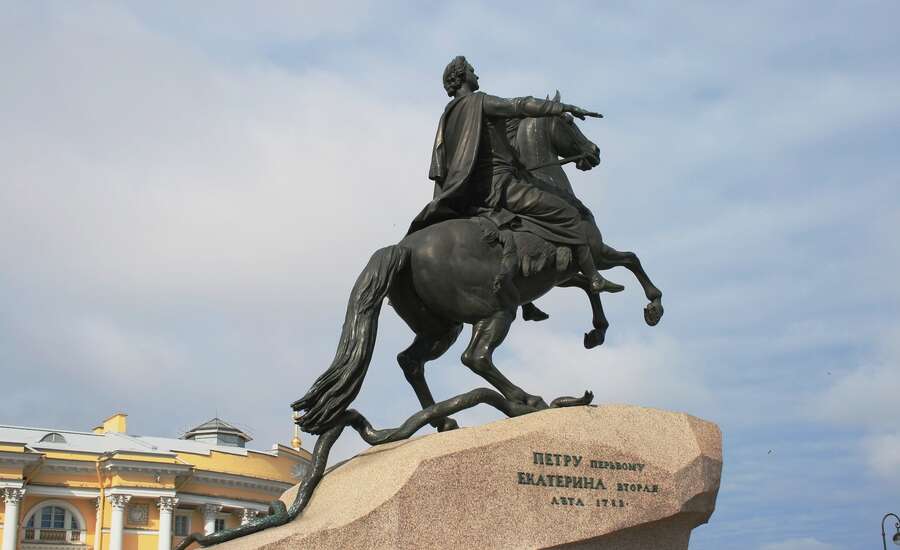
Photo by Lynn Greyling from Pixabay
Peter I, the Great (1672-1725), consolidated autocracy in Russia and brought his country into the European state system. From its modest beginnings in the 14th century principality of Moscow, Russia had become the largest state in the world by Peter's time. Three times the size of Europe, it spanned the Eurasian landmass from the Baltic Sea to the Pacific Ocean. Much of its expansion had taken place in the 17th century, culminating in the first Russian settlement of the Pacific in the mid-17th century, the reconquest of Kiev, and the pacification of the Siberian tribes.
However, this vast land had a population of only 14 million. Grain yields trailed those of agriculture in the West, compelling almost the entire population to farm. Only a small fraction of the population lived in the towns. Peter was deeply impressed by the advanced technology, warcraft, and statecraft of the West. He studied Western tactics and fortifications and built a strong army of 300,000 made up of his own subjects, whom he conscripted for life. In 1697-1698, he became the first Russian prince to ever visit the West, where he and his entourage made a deep impression. In celebration, Peter assumed the title of emperor as well as tsar, and Muscovy officially became the Russian Empire in 1721.
Peter's first military efforts were directed against the Ottoman Turks. His attention then turned to the north. Peter still lacked a secure northern seaport except at Archangel on the White Sea, whose harbor was frozen nine months a year. Access to the Baltic was blocked by Sweden, whose territory enclosed it on three sides. Peter's ambitions for a "window to the sea" led him in 1699 to make a secret alliance with the Polish-Lithuanian Commonwealth and Denmark against Sweden, resulting in the Great Northern War. The war ended in 1721 when an exhausted Sweden sued for peace with Russia. Peter acquired four provinces situated south and east of the Gulf of Finland, thus securing his coveted access to the sea. There he built Russia's new capital, St. Petersburg, as a "window opened upon Europe" to replace Moscow, long Russia's cultural center.
The strains of Peter's military expeditions produced another revolt. Invoking the name of populist rebel Stenka Razin, another Cossack chieftain Kondraty Bulavin raised a revolt, ultimately crushed.
Peter reorganized his government on the latest Western models, molding Russia into an absolutist state. He replaced the old boyar Duma (council of nobles) with a nine-member senate, in effect a supreme council of state. The countryside was also divided into new provinces and districts. Peter told the senate that its mission was to collect tax revenues. In turn tax revenues tripled over the course of his reign. As part of the government reform, the Orthodox Church was partially incorporated into the country's administrative structure, in effect making it a tool of the state. Peter abolished the patriarchate and replaced it with a collective body, the Holy Synod, led by a lay government official. Meanwhile, all vestiges of local self-government were removed, and Peter continued and intensified his predecessors' requirement of state service for all nobles.
Peter died in 1725, leaving an unsettled succession and an exhausted realm. His reign raised questions about Russia's backwardness, its relationship to the West, the appropriateness of reform from above, and other fundamental problems that have confronted many of Russia's subsequent rulers. Nevertheless, he had created the foundations of a modern state and made Russia a permanent part of Europe.
Ruling the Empire (1725-1825)
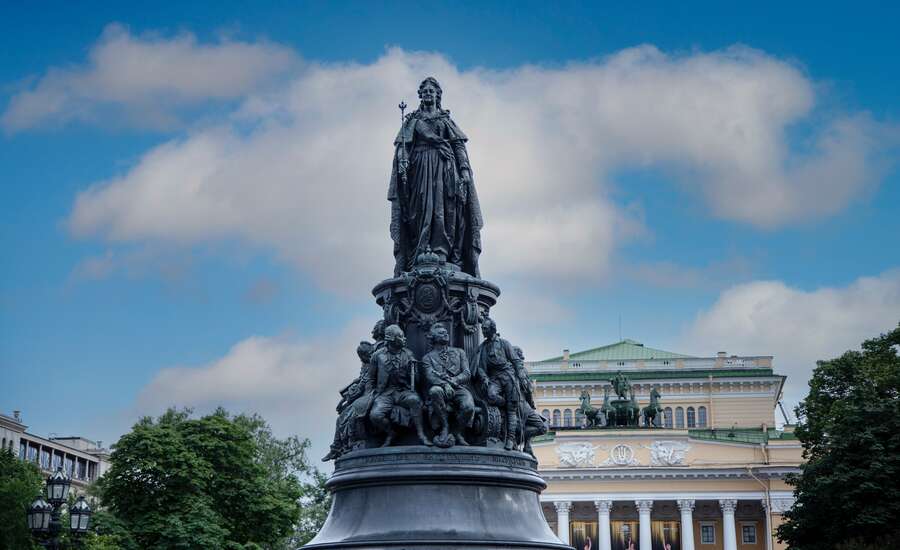
Photo by Tamara Malaniy on Unsplash
Nearly forty years were to pass before a comparably ambitious and ruthless ruler appeared on the Russian throne. Catherine II, the Great, was a German princess who married the Russian heir to the crown. Finding him an incompetent moron, Catherine tacitly consented to his murder. It was announced that he had died of "apoplexy", and in 1762 she became ruler.
Catherine contributed to the resurgence of the Russian nobility that began after the death of Peter the Great. State service had been abolished, and Catherine delighted the nobles further by turning over most government functions in the provinces to them.
Catherine extended Russian political control over the Polish-Lithuanian Commonwealth with actions including the support of the Targowica confederation, although the cost of her campaigns, on top of the oppressive social system that required lords' serfs to spend almost all of their time laboring on the lords' land, provoked a major peasant uprising in 1773, after Catherine legalized the selling of serfs separate from land. Inspired by another Cossack named Pugachev, the rebels threatened to take Moscow but they were ruthlessly suppressed. Catherine had Pugachev drawn and quartered in Red Square, but the specter of revolution continued to haunt her and her successors.
While suppressing the Russian peasantry, Catherine successfully waged war against the decaying Ottoman Empire and advanced Russia's southern boundary to the Black Sea. Then, by plotting with the rulers of Austria and Prussia, she annexed half of the Polish-Lithuanian Commonwealth during the Partitions of Poland and pushed the Russian frontier westward into Central Europe. By the time of her death in 1796, Catherine's expansionist policy had made Russia into a major European power. This continued with Alexander I's annexation of Finland from the weakened kingdom of Sweden in 1809.
Napoleon made a major misstep when he invaded Russia after a dispute with Tsar Alexander I and launched an invasion of the tsar's realm in 1812. The campaign was a catastrophe. Although Napoleon's Grand Army made its way to Moscow, the Russians' scorched-earth strategy prevented the invaders from living off the country. In the bitterly cold Russian weather, thousands of French troops died in the snow. Although the Russian Empire would play a leading political role in the next century, secured by its defeat of Napoleonic France, its retention of serfdom precluded economic progress of any significant degree. As West European economic growth accelerated during the Industrial Revolution, which had begun in the second half of the 18th century, Russia began to lag ever farther behind, creating new problems for the empire as a great power.
The Decembrist Revolt
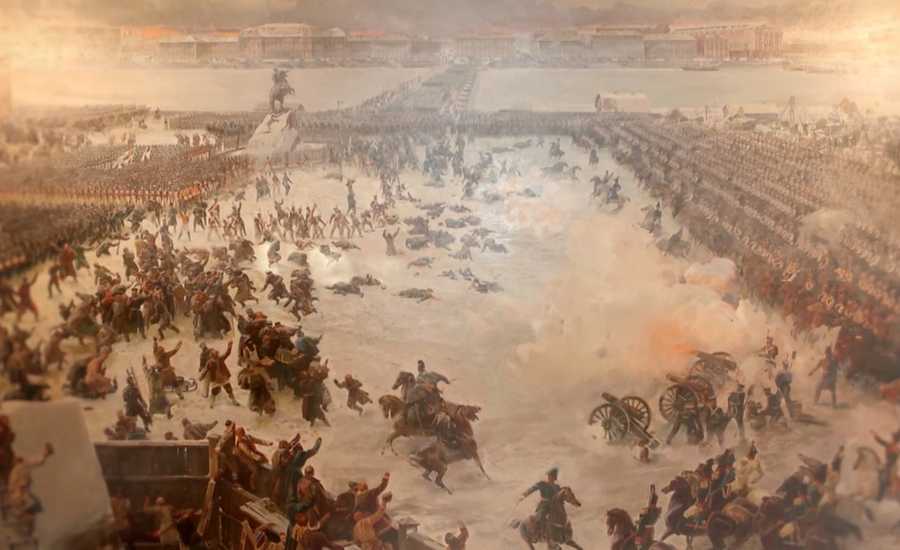
Russia's great power status obscured the inefficiency of its government, the isolation of its people, and its economic backwardness. Following the defeat of Napoleon, Alexander I had been ready to discuss constitutional reforms, but though a few were introduced, no thoroughgoing changes were attempted.
The relatively liberal tsar was replaced by his younger brother, Nicholas I (1825-1855), who at the beginning of his reign was confronted with an uprising. The background of this revolt lay in the Napoleonic Wars, when a number of well-educated Russian officers traveled in Europe in the course of the military campaigns. Their exposure to the liberalism of Western Europe encouraged them to seek change on their return to autocratic Russia. The result was the Decembrist Revolt (December 1825), the work of a small circle of liberal nobles and army officers who wanted to install Nicholas' brother as a constitutional monarch. But the revolt was easily crushed, and Nicholas turned away to the Westernization program begun by Peter the Great and champion the maxim "Autocracy, Orthodoxy, and Nationalism". Russian tsars had also to deal with uprisings in their newly acquired territories of the Polish-Lithuanian Commonwealth, namely the November Uprising in 1830 and the January Uprising in 1863.
Ideological Schisms and Reaction
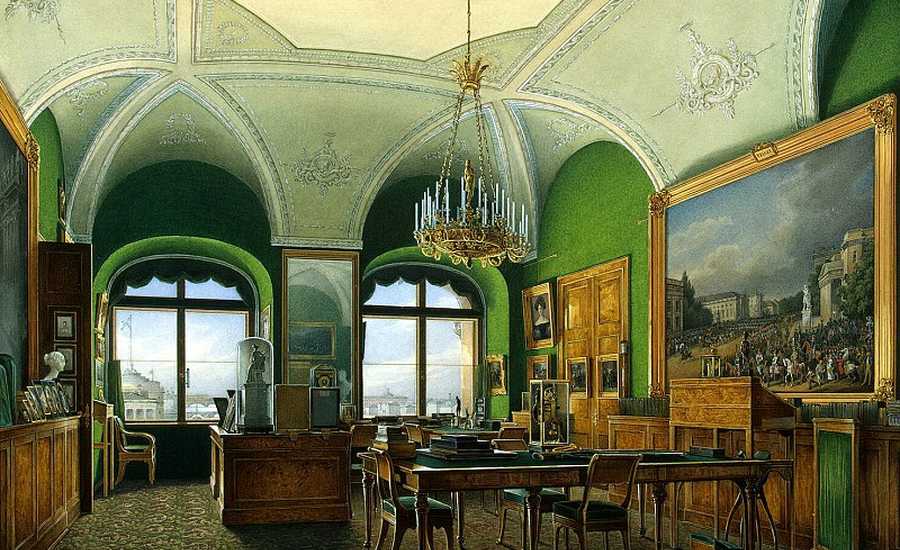
The harsh retaliation for the revolt made "December Fourteenth" a day long remembered by later revolutionary movements. In order to repress further revolts, schools and universities were placed under constant surveillance and students were provided with official textbooks. Police spies were planted everywhere. Would-be revolutionaries were sent off to Siberia; under Nicholas I hundreds of thousands were sent to labor camps there.
In this setting Michael Bakunin emerged as the father of Russian anarchism. He advocated terrorism as an agent of social change. After being shipped to Siberia, he escaped and made his way back to Europe, where he joined forces with Karl Marx, despite some ideological and tactical differences.
The question of Russia's direction had been gaining steam ever since Peter the Great's program of Westernization. Some favored imitating Europe while others renounced the West and called for a return of the traditions of the past. The latter path was championed by the nationalistic Slavophiles, who heaped scorn on the "decadent" West. The Slavophiles preferred the collectivism of the medieval Russian mir, or village community, to the individualism of the West. Later, Communism in Soviet Russia would owe a debt not only to the doctrines of Karl Marx but also the long-established social pattern of the mir.
Alexander II and the Abolition of Serfdom
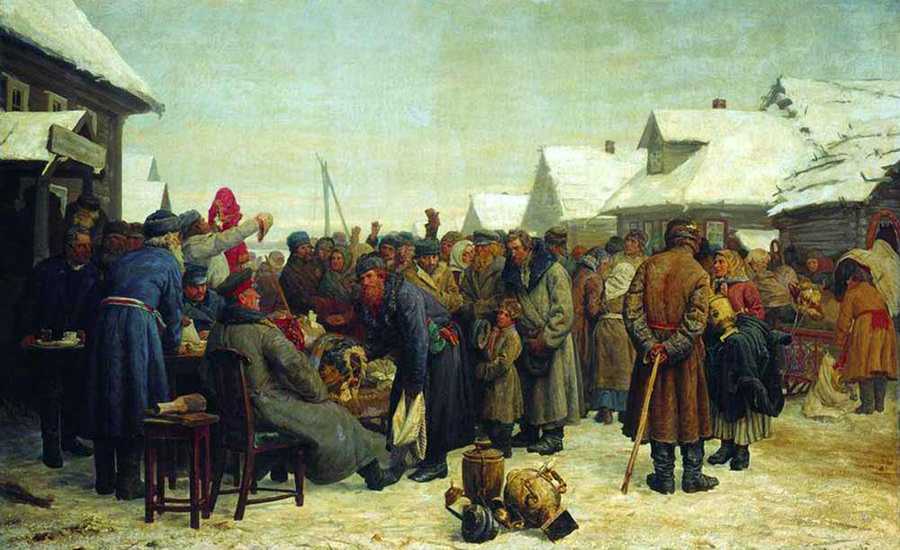
Tsar Nicholas died with his philosophy in dispute. One year earlier, Russia had become involved in the Crimean War, a conflict fought primarily in the Crimean peninsula. Since playing a major role in the defeat of Napoleon, Russia had been regarded as militarily invincible, but the reverses it suffered on land and sea in the Crimean War exposed the decay and weakness of Tsar Nicholas' regime.
When Alexander II came to the throne in 1855, desire for reform was widespread. A growing humanitarian movement, which in later years has been likened to that of the abolitionists in the United States before the American Civil War, attacked serfdom. In 1859, there were more than 23 million serfs living under conditions frequently worse than those of the peasants of Western Europe on 12th century manors. Alexander II made up his own mind to abolish serfdom from above rather than wait for it to be abolished from below through revolution.
The emancipation of the serfs in 1861 was the single most important event in 19th century Russian history. It was the beginning of the end for the landed aristocracy's monopoly of power. Emancipation brought a supply of free labor to the cities, industry was stimulated, and the middle class grew in size and influence. However, instead of receiving their lands as a gift, the freed peasants had to pay a special tax for what amounted to their lifetime to the government, which in turn paid the landlords a generous price for the land that they had lost. In numerous instances the peasants wound up with the poorest land. All the land turned over to the peasants was owned collectively by the mir, the village community, which divided the land among the peasants and supervised the various holdings.
Although serfdom was abolished, since its abolition was achieved on terms unfavorable to the peasants, revolutionary tensions were not abated, despite Alexander II's intentions.
Nihilism
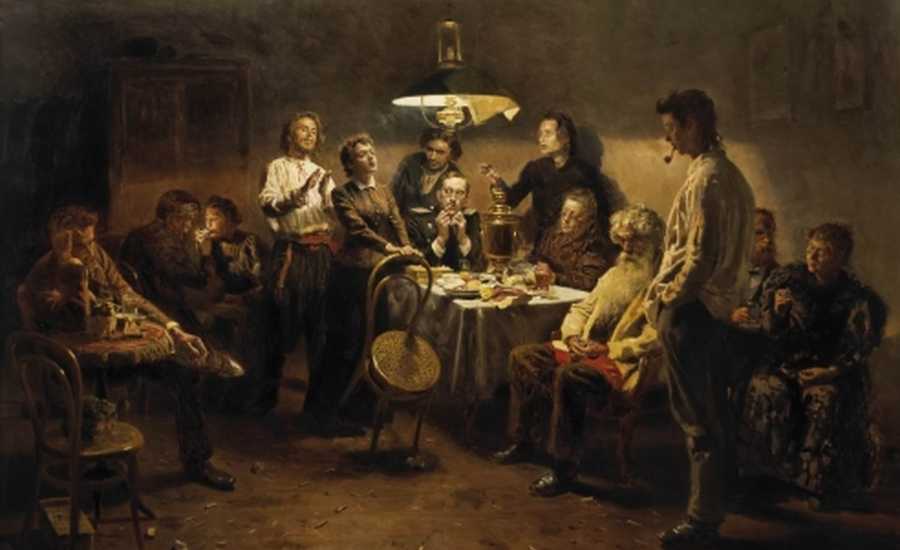
In the 1860s a movement known as Nihilism developed in Russia. For some time many Russian liberals had been dissatisfied by the empty discussions of the intelligentsia. The Nihilists questioned all old values, championed the independence of the individual, and shocked the Russian establishment.
The Nihilists first attempted to convert the aristocracy to the cause of reform. Failing there, they turned to the peasants. Their "go to the people" campaign became known as the Narodnik movement.
While the Narodnik movement was gaining momentum, the government quickly moved to extirpate it. In response to the growing reaction of the government, a radical branch of the Narodniks advocated and practiced terrorism. One after another, prominent officials were shot or killed by bombs. Finally, after several attempts, Alexander II was assassinated in 1881, on the very day he had approved a proposal to call a representative assembly to consider new reforms in addition to the abolition of serfdom, reforms which were designed to ameliorate revolutionary demands.
Autocracy and Reaction under Alexander III
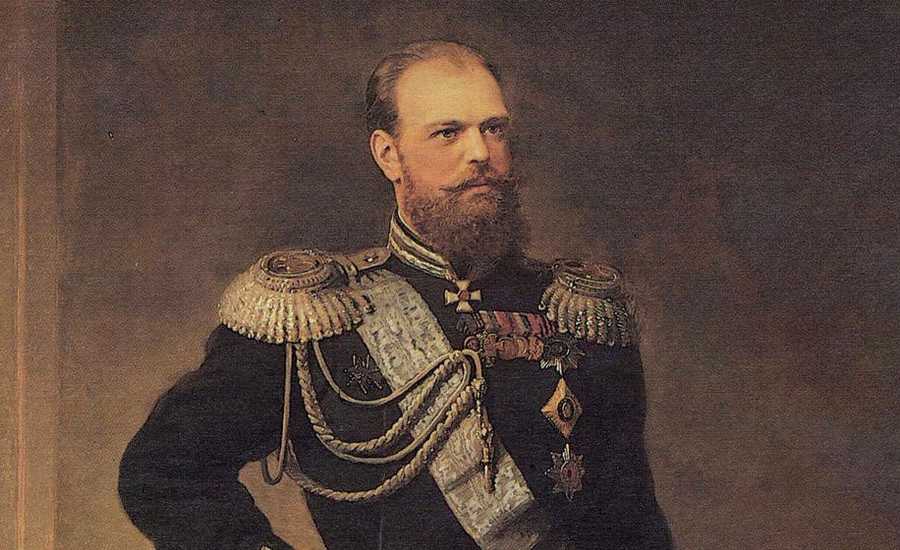
Unlike his father, the new tsar Alexander III (1881-1894) was throughout his reign a staunch reactionary who revived the maxim of "Autocracy, Orthodoxy, and Nationalism" of Nicholas I. A committed Slavophile, Alexander III believed that Russia could be saved from chaos only by shutting itself off from the subversive influences of Western Europe.
The tsar's most influential adviser was Konstantin Petrovich Pobedonostsev, tutor to Alexander III and his son Nicholas, and procurator of the Holy Synod from 1880 to 1895. He taught his royal pupils to fear freedom of speech and press and to hate democracy, constitutions, and the parliamentary system. Under Pobedonostsev, revolutionaries were hunted down and a policy of Russification was carried out throughout the empire. The Jews were signed out as another corrupting influence and were massacred in drives called pogroms, which Alexander III offered official state sanction. Thousands sought asylum in the United States and Western Europe.
Nicholas II and a New Revolutionary Movement
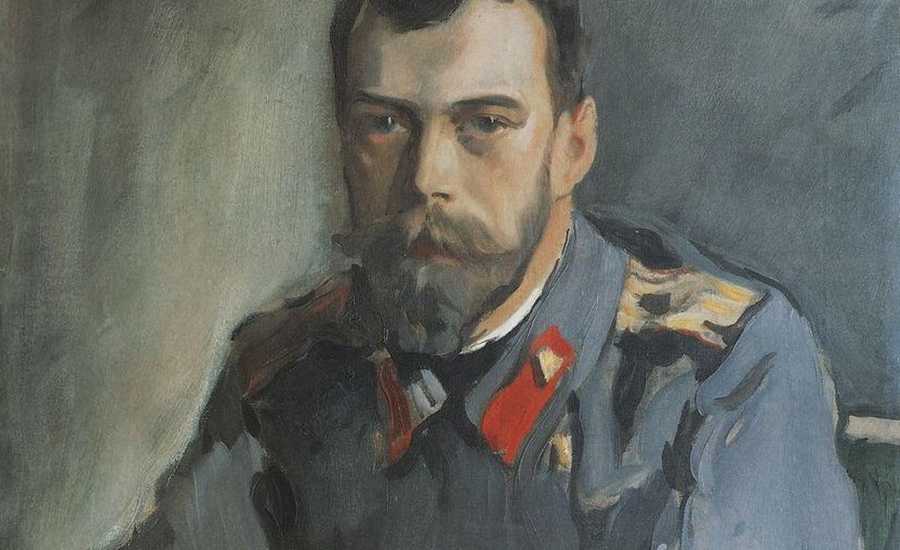
Alexander was succeeded by his son Nicholas II (1894-1917). The Industrial Revolution, which began to exert a significant influence in Russia, was meanwhile creating forces that would finally overthrow the tsar. The liberal elements among the industrial capitalists and nobility believed in peaceful social reform and a constitutional monarchy, forming the Constitutional Democrats, or Kadets. Social revolutionaries combined the Narodnik tradition and advocated the distribution of land among those who actually worked it - the peasants. Another radical group was the Social Democrats, exponents of Marxism in Russia. Gathering their support from the radical intellectuals and the urban working class, they advocated complete social, economic and political revolution.
In 1903 the party split into two wings - the Mensheviks, or moderates, and the Bolsheviks, the radicals. The Mensheviks believed that Russian socialism would grow gradually and peacefully and that the tsar's regime should be succeeded by a democratic republic in which the socialists would cooperate with the liberal bourgeois parties. The Bolsheviks, under Vladimir Lenin, advocated the formation of a small elite of professional revolutionists, subject to strong party discipline, to act as the vanguard of the proletariat in order to seize power by force.
The disastrous performance of the Russian armed forces in the Russo-Japanese War (1904-1905) was a major blow to the Tsarist regime and increased the potential for unrest. In January 1905, an incident known as "Bloody Sunday" occurred when Father Gapon led an enormous crowd to the Winter Palace in St. Petersburg to present a petition to the tsar. When the procession reached the palace, Cossacks opened fire on the crowd, killing hundreds. The Russian masses were so aroused over the massacre that a general strike was declared, and a democratic republic demanded. This marked the beginning of the Russian Revolution of 1905. Soviets (councils of workers) appeared in most cities to direct revolutionary activity. Russia was paralyzed, and the government was desperate.
In October 1905, Nicholas reluctantly issued the famous October Manifesto, which conceded the creation of a national Duma (legislature) to be called without delay. The right to vote was extended and no law was to go into force without confirmation by the Duma. The moderate groups were satisfied; but the socialists rejected the concessions as insufficient and tried to organize new strikes. By the end of 1905, there was disunity among the reformers, and the tsar's position was strengthened - for the time being.
Read on to learn about the Russian Revolution.
